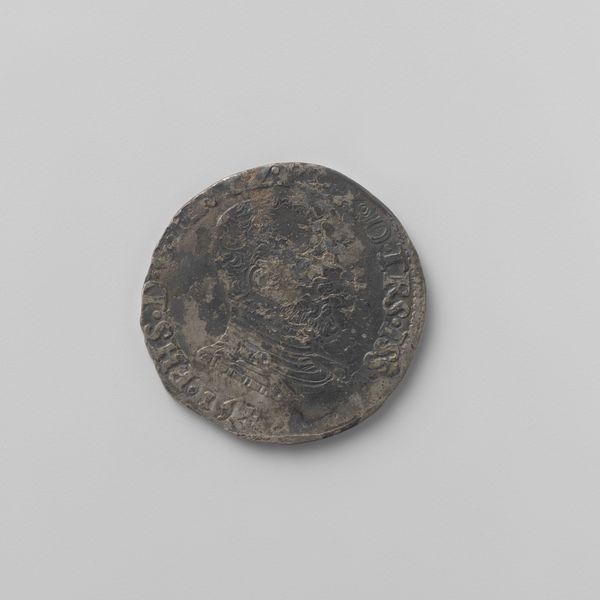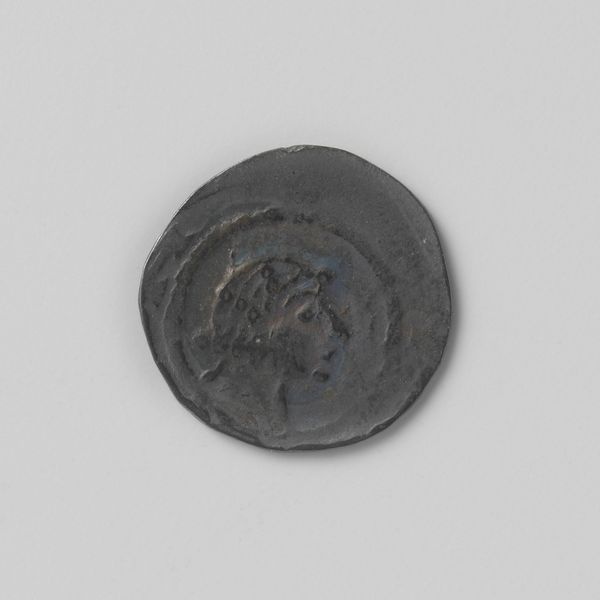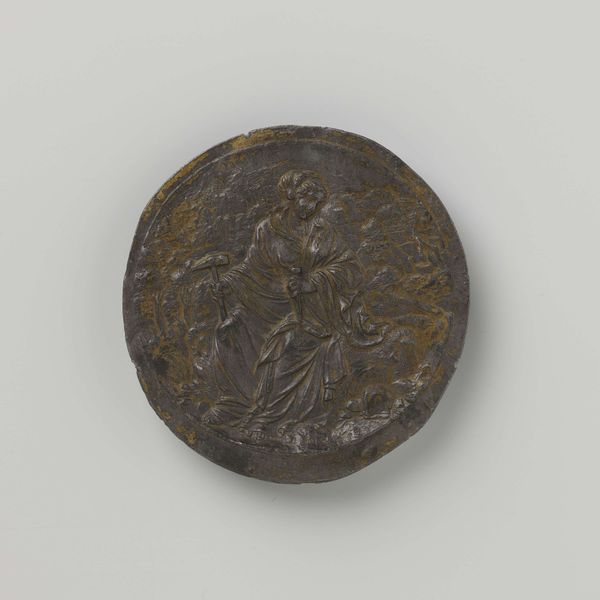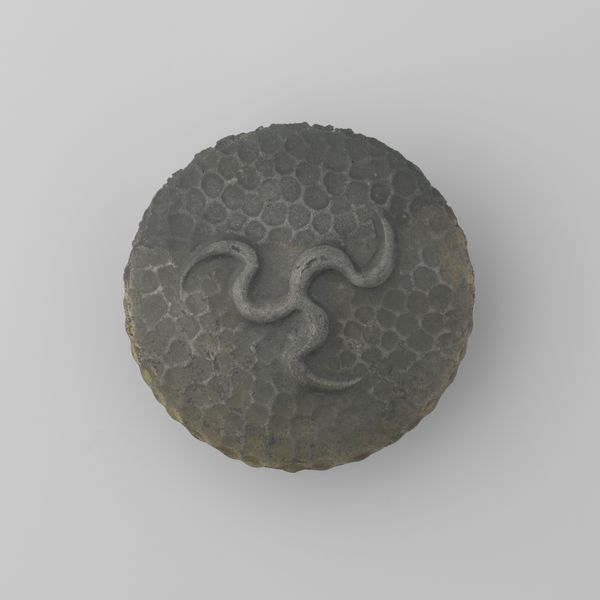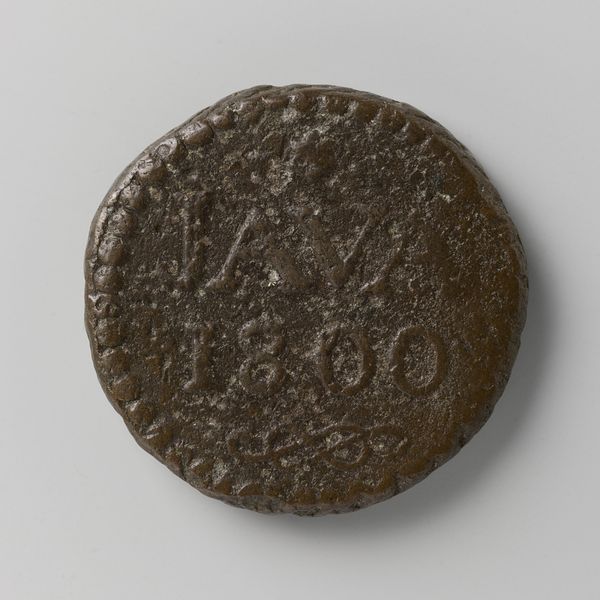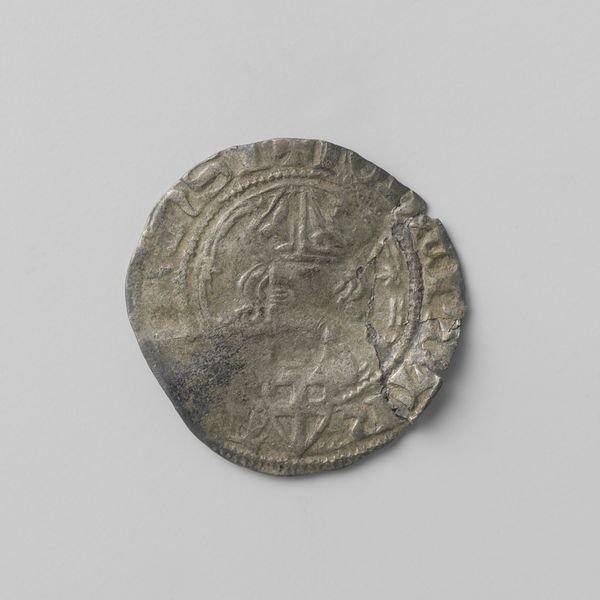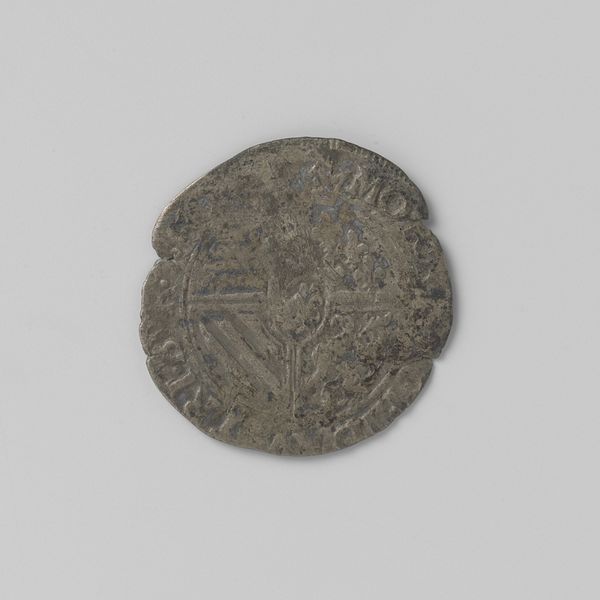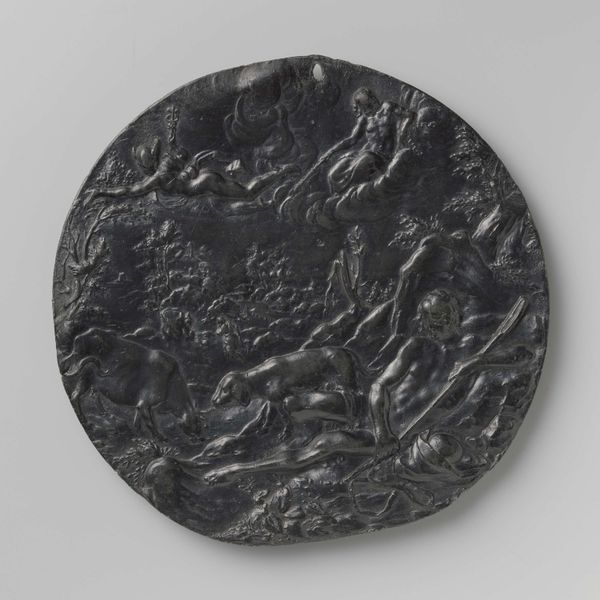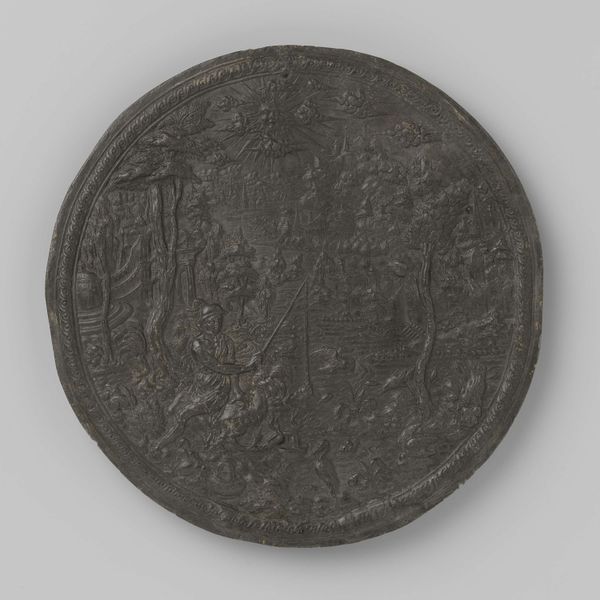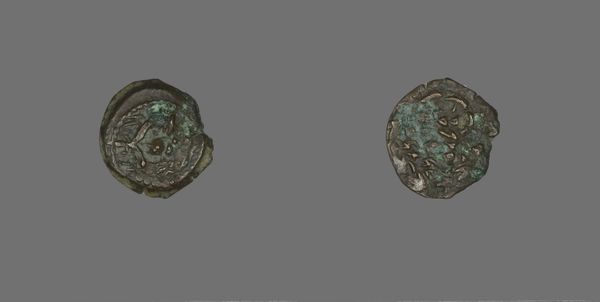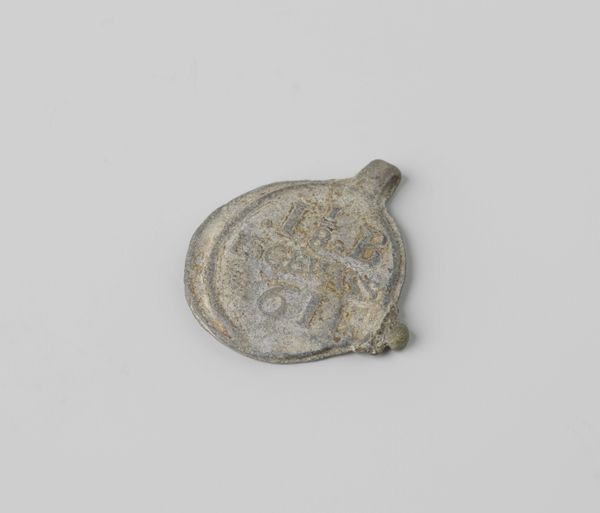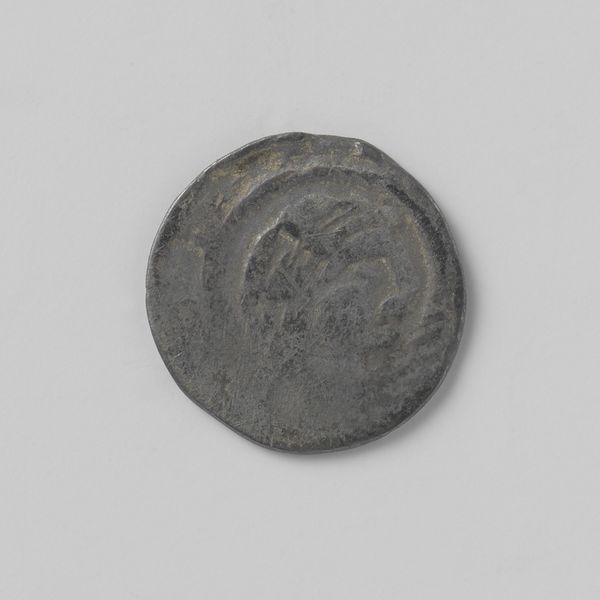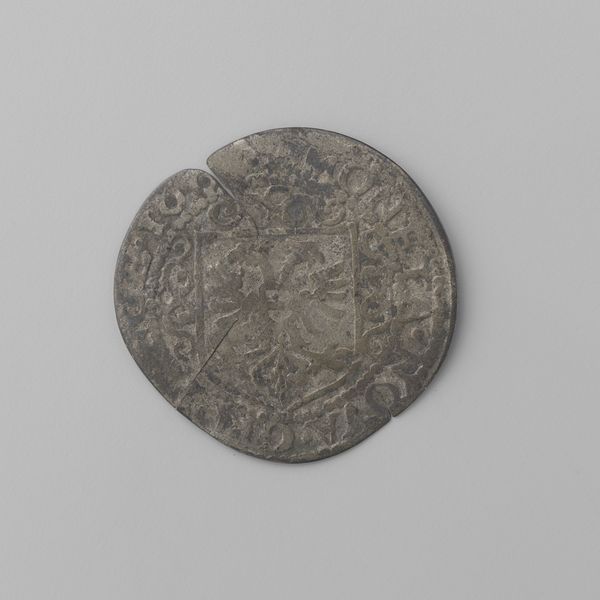
Grootzegel van Lodewijk XIV behorend bij het diploma waarbij Cornelis Lampsins verheven werd tot baron van Tobago en ridder van St. Michel 1662 - 1668
0:00
0:00
sculpture
#
medieval
#
baroque
#
sculptural image
#
sculpture
#
ceramic
#
watercolor
Dimensions: diameter 11 cm, 76.02 gr
Copyright: Rijks Museum: Open Domain
Editor: So, here we have the "Great Seal of Louis XIV," dating from the 1660s. It accompanied a diploma elevating Cornelis Lampsins to Baron of Tobago. What strikes me is the weathered quality and density of symbolism packed into such a small object. How do you interpret this seal? Curator: It's more than just a seal, it’s a concentrated expression of power. The very material, likely wax, embodies transience and authority intertwined: a temporary imprint meant to have lasting consequence. Do you notice the figures flanking the central emblem? What stories might they whisper about the aspirations of Louis XIV? Editor: I see the figures – almost like guardian figures or heraldic supporters on a coat-of-arms. It feels like they’re reinforcing the power and legitimacy represented by the central crest. What do you mean by whispers? Curator: Every deliberate inclusion here–the crown, the fleur-de-lis—resonates with centuries of established cultural memory. Each evokes a narrative that transcends a simple claim to power, contributing to the rich tapestry of Bourbon iconography. Don't you think? What feelings does this arouse in you? Editor: Definitely, now that you point out the deeper meaning of these symbols. It's less of a static object, and more of a storytelling device. So what kind of narratives would someone living back then think about, if they were to see it for the first time? Curator: A subject in the 17th century, encountering this seal, would recognize the visual cues and understand it in light of Louis XIV’s divine right to rule. The emblem would reinforce ideas of French identity and the king's position as God’s representative on Earth. The stories told were about stability, order, and the grandeur of France. It acted as an ever-present cultural and political statement. Editor: I see, a visual representation of the king's narrative for his people! It really brings another layer of depth to it. Curator: Precisely. This object condenses entire belief systems, political structures, and societal expectations into one enduring, symbolic imprint. It also proves that a picture is worth a thousand words.
Comments
No comments
Be the first to comment and join the conversation on the ultimate creative platform.
